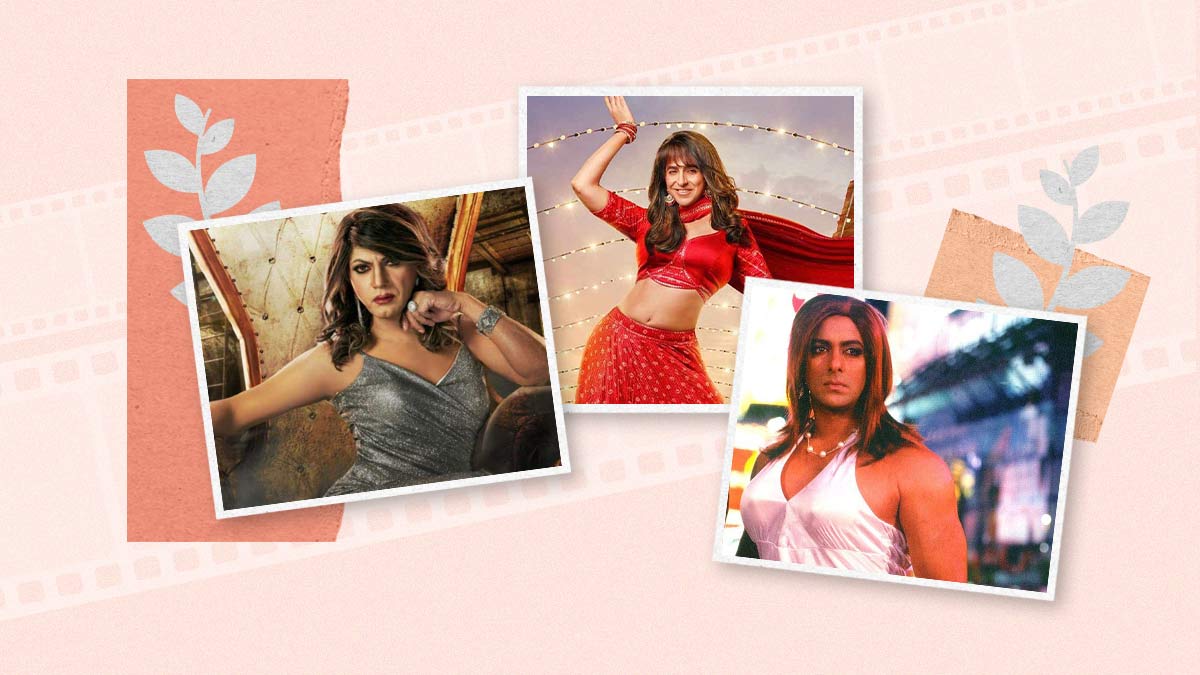
Bollywood's Cross Dressing Conundrum: Men As Women – Comedy, Homophobia, And Objectification
Bollywood, India's vibrant and prolific film industry, has often been both a reflection of societal norms and a catalyst for change. One intriguing yet contentious theme that has found its way into numerous Bollywood films is cross-dressing, where male actors don women's attire for comedic effect. In this article, we'll delve into the complex world of Bollywood's cross-dressing conundrum, exploring its history, impact, and the controversies surrounding it.
The Laughter Starts: A Brief History Of Cross-Dressing in Bollywood
 Image Courtesy: IMDb
Image Courtesy: IMDb
Cross-dressing in Bollywood isn't a recent phenomenon. It has a long and storied history dating back to the golden age of Indian cinema. Iconic actors like Kishore Kumar and Mehmood popularised this comedic trope in films like 'Padosan' (1968) and 'Chalti Ka Naam Gaadi' (1958). These films had audiences in splits as they watched male actors don the attire of their female counterparts, often as a part of elaborate ruses or mistaken identities.
The Comedy Element: Laughter Or Stereotyping?
One of the primary reasons for the prevalence of cross-dressing in Bollywood is its comedic potential. There's something inherently amusing about seeing a man trying to navigate the world in women's clothing. These situations often lead to hilarious misunderstandings, mistaken identities, and rib-tickling humour.
For instance, in the film 'Dulhan Hum Le Jayenge' (2000), Salman Khan's character accidentally ends up dressed as a bride. The ensuing chaos and confusion provide ample comic relief. These moments of humour have endured such films to audiences for decades.
1
2
3
4
However, the flip side of this comedy is the reinforcement of gender stereotypes. The portrayal of men in women's clothing can inadvertently perpetuate the idea that such acts are inherently funny simply because they challenge conventional gender norms. This can contribute to the marginalisation and objectification of the LGBTQ+ community, particularly transgender individuals.
The Homophobia Factor: Jokes At The Expense Of Gender Identity
 Image Courtesy: IMDb
Image Courtesy: IMDb
While cross-dressing in Bollywood can be funny, it often hinges on jokes that mock individuals who don't conform to traditional gender roles. These jokes can be unintentionally hurtful and reinforce homophobia.
For example, in 'Chachi 420' (1997), Kamal Haasan's character cross-dresses as a nanny to be closer to his daughter. While the film is a comedy, it features jokes that make fun of his character's appearance and mannerisms as a woman. Such humour can perpetuate harmful stereotypes and create a hostile environment for LGBTQ+ individuals who are already marginalised.
Objectification: Cross-Dressing And The Male Gaze
Another contentious aspect of cross-dressing in Bollywood is the objectification of men dressed as women. In many films, the male characters are presented in a way that emphasises their attractiveness, even in women's clothing. This objectification can lead to a reduction of female characters to their physical appearances, reinforcing harmful beauty standards.
Consider the film 'Garam Masala' (2005), where Akshay Kumar's character cross-dresses to woo women. While the film is a comedy, it uses his character's attractiveness as a comedic element. This can send the message that a man's worth is primarily determined by his looks, even when he's dressed as a woman.
The Changing Landscape: A Shift Towards Sensitivity
 Image Courtesy: IMDb
Image Courtesy: IMDb
In recent years, Bollywood has made attempts to address the problematic aspects of cross-dressing in film. Filmmakers are becoming more aware of the need for sensitivity and inclusivity in their portrayals.
For instance, 'Dream Girl' (2019), starring Ayushmann Khurrana, explores the comedic potential of a man imitating a woman's voice over the phone to work in a call center. While the film contains humour, it also attempts to humanise the character's struggles with societal expectations and judgements.
Don't Miss: Gangubai To Chameli: Portrayal Of Sex Workers In Bollywood Films
Breaking Stereotypes: Positive Portrayals And Authentic Representation
 Image Courtesy: IMDb
Image Courtesy: IMDb
It's crucial to acknowledge that not all cross-dressing portrayals in Bollywood perpetuate stereotypes or objectify characters. Some films have used cross-dressing as a means to challenge stereotypes and promote inclusivity.
In 'Laxmii' (2020), Akshay Kumar's character is possessed by the spirit of a transgender woman. While the film's treatment of the transgender community has been a subject of debate, it does attempt to address issues of identity and acceptance.
Similarly, 'Gulabo Sitabo' (2020) features Amitabh Bachchan in a role where he plays a cantankerous old man who occasionally dresses in women's clothing. The film doesn't use this aspect for cheap laughs but rather to explore the eccentricities of the character.
A Complex Conundrum
Don't Miss: Not Ramaiya Vastavaiya: Jawan's New Song Features Shah Rukh Khan's Signature Swag And Groovy Dance Moves
Bollywood's cross-dressing conundrum is undeniably complex. While it has provided audiences with laughter and entertainment for decades, it has also perpetuated stereotypes, objectification, and homophobia. However, there are signs of change, with filmmakers increasingly recognising the importance of sensitivity and inclusivity.
As Bollywood continues to evolve, it's essential for filmmakers and audiences alike to engage in critical conversations about the portrayal of cross-dressing in cinema. By challenging stereotypes and promoting authentic representation, Bollywood can use this age-old trope as a means to foster understanding and acceptance of diverse gender identities in society. In doing so, it can transform the cross-dressing conundrum into a platform for positive change.
Also watch this video
Herzindagi video
1
2
3
4